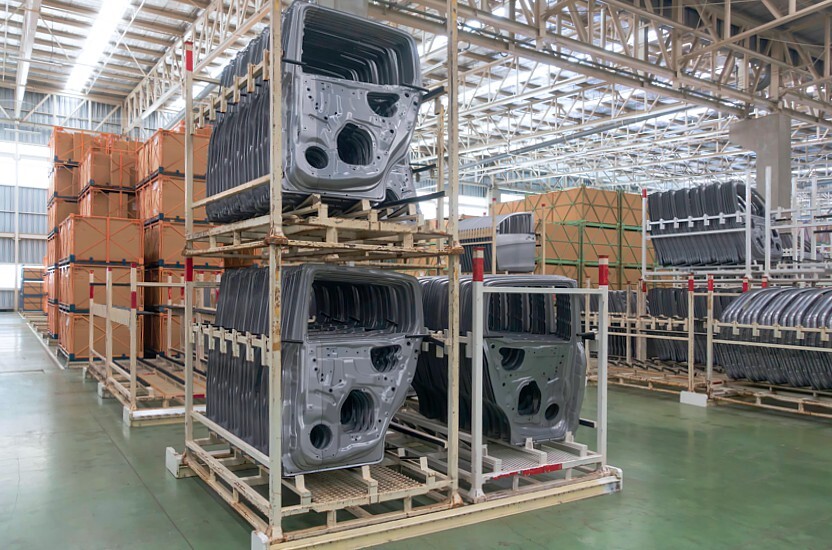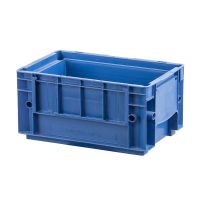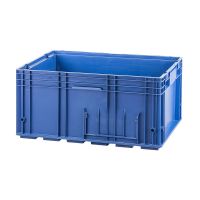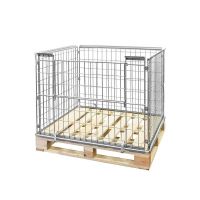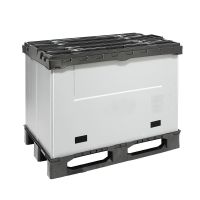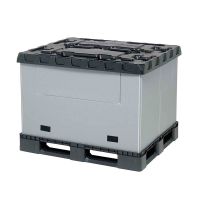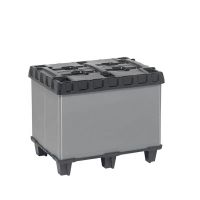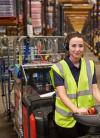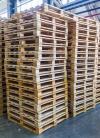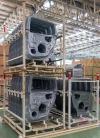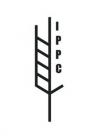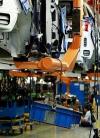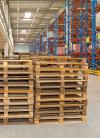It is believed that the first reusable containers were used in the automotive industry. The use of returnable packaging goes back as far as 1930 in the container return department at Ford Motor Company Rouge. Parts were shipped in innovatively sized boxes so that wood could be reused for other packaging.
In the 1960s and 1970s, reusable plastic containers, boxes, and pallets became increasingly popular. Returnable packaging and pallet management systems had a deep impact on the automotive industry, and the success of that sector was exemplary for many other industries that began to use returnable packaging.
At first, the main goal was to eliminate massive amounts of waste. Over time, reusable packaging became a key logistical element to improve productivity while facilitating automation, better inventory control and higher quality. Starting in 1985, many automotive companies began using plastic containers and pallets on a regular basis. In the ensuing years, reusable packaging began to dominate, and many facilities reduced single-use packaging. Today, with sustainability policies and technological changes in the automotive industry, returnable packaging has become the standard.
Sustainability means smooth delivery and reuse of packaging
Car companies often work in closed loop systems regarding returnable packaging. This is a very efficient solution that fits into the strategy of sustainable development. Such carriers are robust, repairable if necessary and there is no need to constantly buy disposable pallets or containers. This saves costs and reduces CO2 emissions in the return transport of empty folded containers. This is why the Reusable Transport Packaging State of the Industry Report highlights that 88% of respondents expect demand for reusable packaging to increase over the next 12 months in the automotive industry. This is due to the ongoing transformation of the industry and the key role of returnable packaging.

Reusable containers in automotive manufacturing
Today's automotive sector uses a variety of reusable products such as KLT containers, euro containers, palletboxes, euro pallets (EPAL), and plastic pallets. Automotive includes both standard pallets and containers as well as custom packaging such as wooden pallets designed for special order. Sometimes packaging dedicated to special components is required due to special applications, different size or geometry of parts.
There are several reasons why reusable products are such a good fit for automotive applications
Characteristics of reusable packaging:
- the reduction of solid waste compared to disposable packaging.
- allow high protection for demanding parts
- more durability at a lower transportation cost than single-use packaging
- ideally suited for automatic assembly lines
- provide repeatable and standardized packaging.
88% of respondents expect demand for reusable packaging to increase over the next 12 months"
Popular carriers and their practical applications
Plastic KLT stacking boxes
When storing small parts, a popular type of packaging is the KLT stacking boxes ideally suited for automated production processes. Vertical ribs on the container walls make these containers very robust for automated production lines. The reinforced bottom withstands heavy loads and the special design allows for easy drainage of liquids during the cleaning process. Dimensions of the containers are adapted to euro pallets . The containers are available in different sizes, so there is always one available in the proper size.
Folded pallet boxes ideal for long distance transportation
Foldable palletboxes are very popular in the automotive industry. The bulk containers are advantageous in terms of being stackable when full, and also as collapsible when empty to minimize the amount of space taken up in return transport. The folding and highly stable Used Foldable Pallet Box has been specially developed for long distances, has a capacity of 847 litres and has a statis carrying capacity of 3200 kg. Due to its high durability, the box is ideal for long-term use.
Gitterbox: Metal crates for high storage warehouses
Gitterboxes function as licensed containers because, due to their standard size, they are fully interchangeable and work in packaging pooling. They have special EPAL markings to ensure that we know the year of manufacture and the manufacturer of the container, which ensures the originality of the product. Gitterboxes are one of the most well-known packaging for the transport of heavy materials in industry due to their durability. Particularly in demand in the automotive industry, which produces heavy, non-standard components.
We have license to repair Gitterboxes according to EPAL standard. In our mechanical workshops damaged Gitterboxes are checked and carefully repaired so that they will return to the pooling cycle.
Using pooling to reduce empty containers transport
The automotive industry favors the use of reusable packaging. This is due to several factors, including regular, predictable delivery schedules and dedicated, certified transportation providers serving the logistics chain.
As the automotive industry and its supply base takes on global proportions, the challenge of container returns becomes greater. This situation has led automotive decision makers to consider the benefits of joining third-party companies by repackaging individual components into returnable containers before they enter the assembly plant. This is particularly noticeable in Europe, where space constraints and sustainability concerns are high.
Packaging management and supply chain visibility
Packaging manufacturers, suppliers, and 3PLs are looking at how to make transportation and handling processes more efficient Visibility-enhancing technologies such as RTI Management, or packaging workflow management, are critical to logistics development.
It is a process that tells you where your packaging is at every stage of the supply chain between manufacturers, vendors and customers. This saves you money on new packaging and takes the hassle out of media administration. What's more, you get the full support of specialists in product optimization, as well as at the level of current EU regulations.
If you would like to learn more about the applications of reusable packaging or take advantage of our packaging workflow services, please contact us. We are ready to be your partner in your logistic processes in the time of changing technologies.
If you would like to know more about reusable packaging applications or packaging circulation services, contact us.


